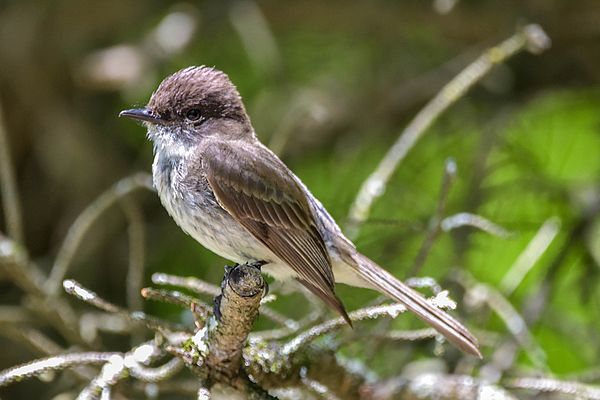Eastern Phoebe -- Harbinger of spring
Article by Ava Steenstrup
The promise of spring comes in a variety of ways. The chill in the air is subsiding, buds on trees and early spring flowers are beginning to form, migrating birds are arriving, and the first bumblebees are emerging from their winter nests.
In addition, early morning birdsongs or “the dawn chorus” is one the best known and most recognizable signs that spring has truly spring.
Eastern Phoebes are one of the first migrants to return to their breeding grounds in spring. This little brown and yellowish-white passerine is one of the few birds that sing its own name. When you hear its two part song “fee-bee”, look for this flycatcher bobbing its tail up and down while perched on a low tree branch.
Phoebes appear large headed and often fly from perches, nab an insect in mid-air, and return to the same perch. They are generally solitary and are diurnal being most active in the morning. They feed mainly on insects, however, will also eat fruits and berries in cooler weather.
Eastern Phoebes breed in wooded areas, particularly near water sources, that provide nesting sites. They nest almost exclusively on man-made structures such as eaves of buildings, overhanging decks, bridges, and culverts.
Did you know? The Eastern Phoebe was the first bird species banded in the North America. In 1804, John James Audubon - ornithologist, naturalist, and artist – tied a single piece of silver thread around a leg of these birds to track their return to the same nesting sites each year.

